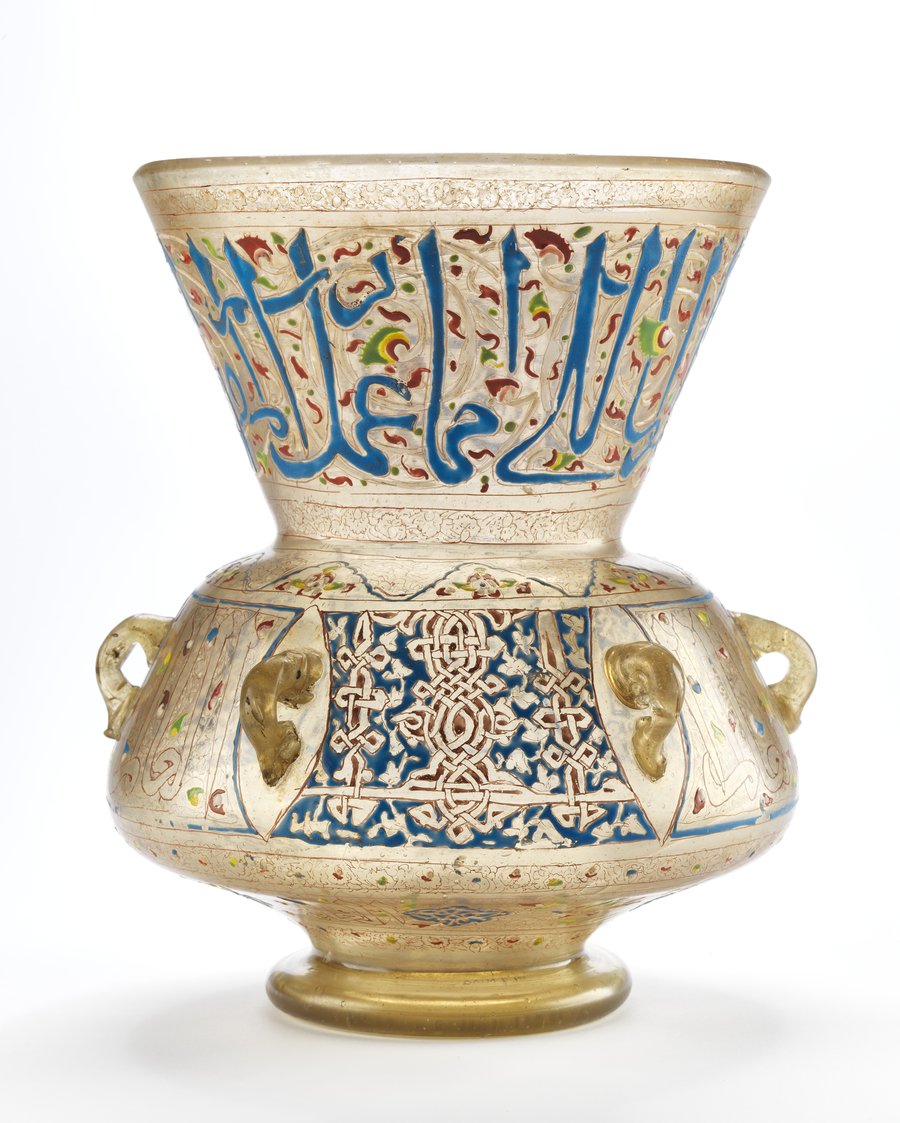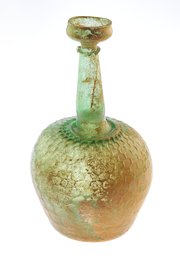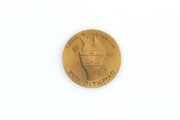
Mosque Lamp
Museum of Islamic Art
- Title:
- Mosque Lamp
- Ruler:
- Sultan al-Nasir Muhammad bin Qala'un
- Production place:
- Egypt
- Date:
- 1347 - 1365
- Period:
- Mamluk
- Title:
- Mosque Lamp
- Ruler:
- Sultan al-Nasir Muhammad bin Qala'un
- Production place:
- Egypt
- Date:
- 1347 - 1365
- Period:
- Mamluk
- Material:
- Glass, Enamel, Gold
- Technique:
- Glassblowing, Enamelling, Gilding, Applying
- Dimensions:
- 27.5
- Diameter:
- 24
This vase-shaped mosque lamp belongs to a well-established group of glass lamps most probably made for the Mamluk Sultan (al-Nasir Nasir al-Din) Hasan (734-763 AH/1334-61 CE) in the mid-8th century AH/mid-14th century CE, in either Syria or Egypt. Free blown of clear, transparent glass and enameled in a colourful palette consisting of blue, red, green, yellow and white – and detailed with delicate gilding – the entire external surface of this example is painted with a pattern of bold calligraphy and scrolls contrasted by equally fine arabesques and lotus flowers. The most unusual feature of this lamp is the panel of stylised pseudo-Kufic script alternating with thuluth inscriptions, which appear around the sides of vase’s body, and reads: “What was made for his Excellency, the Elevated, the Servant of the Lord, the Great Amir, the Possessor”; around the body and its underside are six repeating inscriptions of "The Learned". The complementary visual contrast of these two scripts appears as the major decorative feature on other glass lamps from this group, which were most probably commissioned to decorate the interior of Sultan Hasan’s mosque-madrasa complex built between 757 and 765 AH/1356 and 1363 CE in Cairo.



